Choosing the Right Caster Material Is Crucial
In the dynamic world of industrial and commercial equipment, the humble caster wheel often goes unnoticed, yet it plays a crucial role in ensuring mobility and operational efficiency.
A caster is more than just a wheel; it’s a complete assembly that includes a wheel and a mounting frame. These assemblies are ubiquitous, finding their place in a myriad of settings – from the bustling aisles of factories and warehouses to the quiet corridors of hospitals and the cozy corners of home furniture. The versatility of casters is largely attributed to the diverse range of materials used in their construction, each offering unique advantages and catering to specific needs.

However, the decision to select the right caster material is not one to be taken lightly. Different materials bring their own set of advantages and disadvantages. Factors such as wear resistance, load-bearing capacity, noise reduction, and suitability for different environments play a pivotal role in determining the ideal choice for a given application. In this guide, we will explore the various materials used in caster wheels, dissecting their properties, applications, and suitability to help you make an informed decision.
Understanding Caster Wheel Materials
In the realm of caster wheels, the material used in their construction is not just a matter of choice but a critical determinant of their performance, durability, and suitability for various applications.
1.1 The Role of Material in Caster Performance:
- Influence on Durability: The material of a caster wheel directly impacts its longevity and resistance to wear and tear. Harder materials tend to have a longer lifespan, especially in demanding industrial environments.
- Impact on Load Capacity: The strength and resilience of the material determine how much weight the caster can support. This is crucial for safety and efficiency in material handling.
- Effect on Floor Interaction: Some materials are gentler on floors, preventing scratches and damage, while others are designed for rough, uneven surfaces.
- Noise Considerations: The operational environment often dictates the need for noise reduction, where softer materials are preferred to minimize sound.
1.2 Balancing Cost and Performance:
- Economical Choices: Some materials offer a more cost-effective solution but might compromise on certain performance aspects.
- Premium Options: On the other hand, premium materials might offer superior performance but at a higher cost.
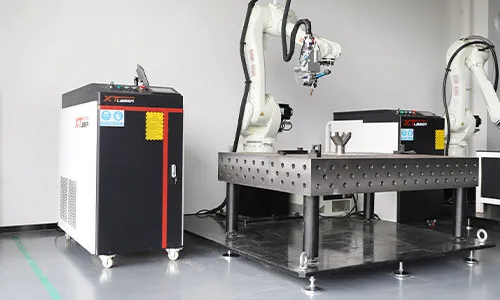
1.3 Environmental and Operational Considerations:
- Temperature Resistance: Certain materials perform better in extreme temperatures, either high or low, making them suitable for specific industrial environments.
- Chemical and Water Resistance: In environments where exposure to chemicals or moisture is a concern, specific materials that resist corrosion and degradation are essential.
1.4 Compliance and Safety Standards:
- Regulatory Compliance: Some materials are required to meet specific industry standards, especially in the medical and food industries.
- Safety in Design: The choice of material can also impact the overall safety of the equipment, especially in terms of stability and control.
Understanding the material science behind caster wheels sets the stage for an informed selection process. Each material brings a unique set of characteristics to the table, influencing everything from the caster’s load-bearing capacity to its environmental suitability. As we move forward, we will delve into specific materials, exploring their advantages, drawbacks, and ideal application scenarios.
Types of Caster Wheel Materials
This section provides a detailed look into various caster wheel materials, highlighting their advantages, disadvantages, and ideal application scenarios. Understanding these materials is key to selecting the right caster for your specific needs.
2.1 Nylon Casters
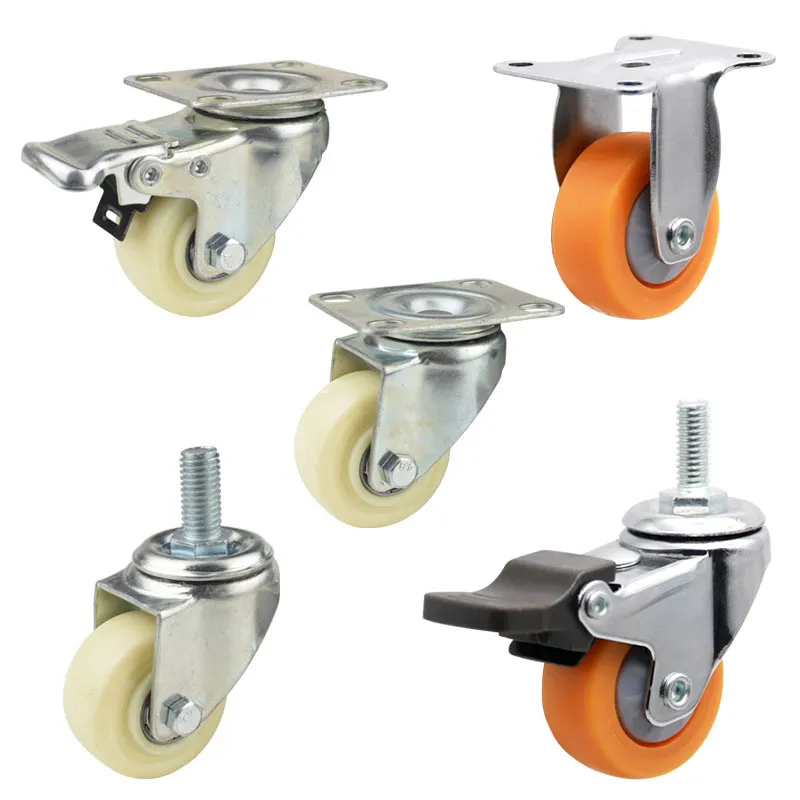
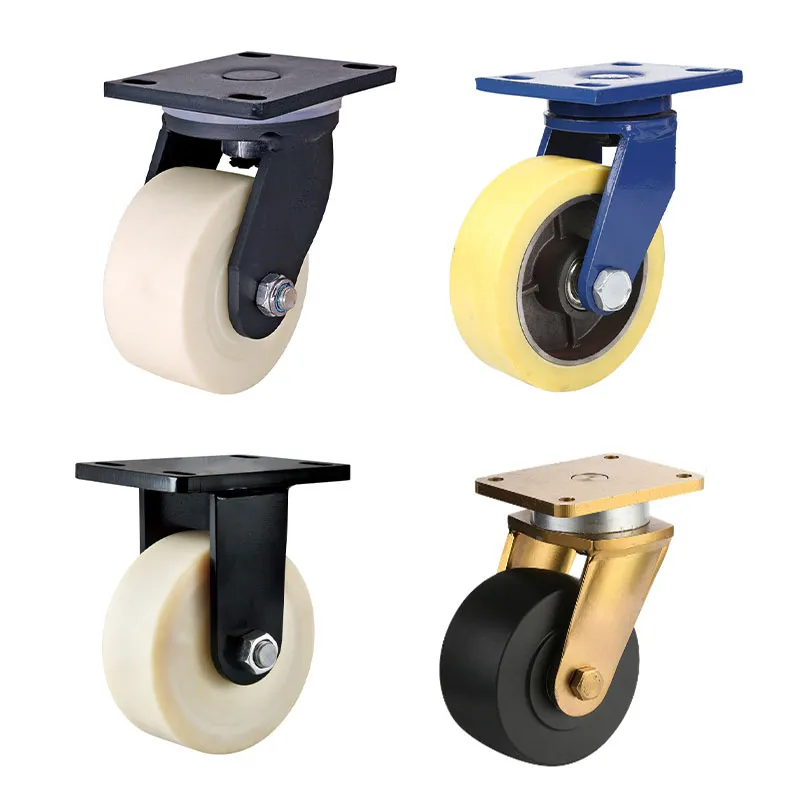

- Advantages:
- Wear Resistance: Nylon is incredibly durable, making it ideal for heavy-duty applications.
- High Load-Bearing Capacity: It can support substantial weights, making it suitable for industrial use.
- Disadvantages:
- Poor Quiet Performance: Nylon wheels can be noisy, which may not be ideal in quiet environments.
- Application Scenarios:
- Ideal for factories and warehouses where durability and load capacity are prioritized over noise reduction.
2.2 Polyurethane Casters

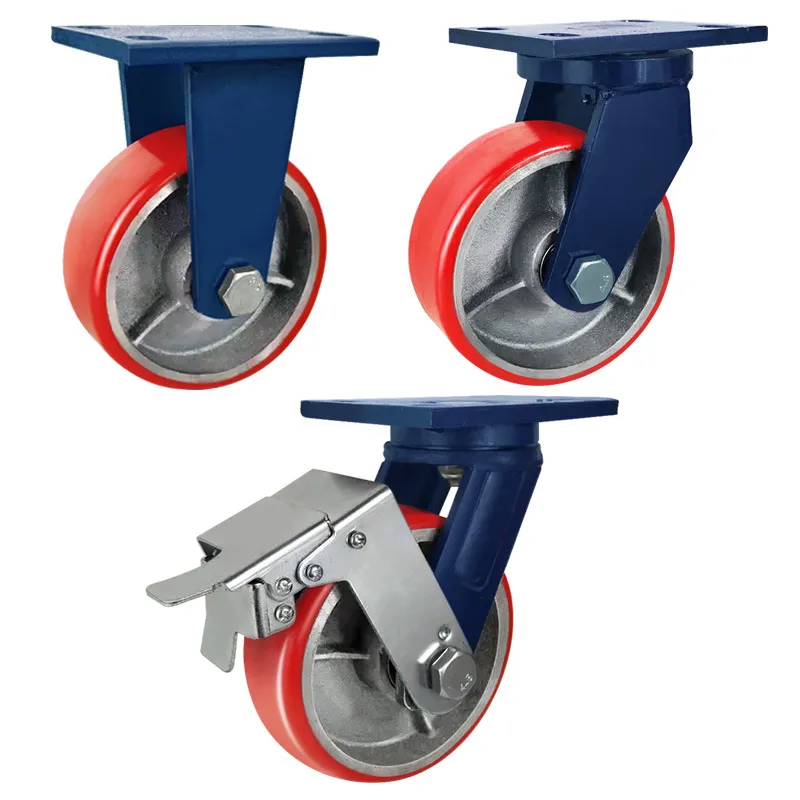
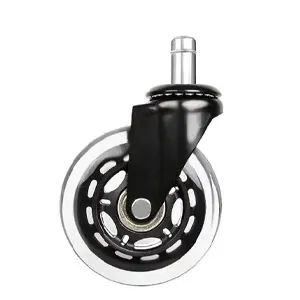
- Advantages:
- Quiet Operation: Offers a smooth, quiet roll, suitable for noise-sensitive environments.
- High Load-Bearing and Wear-Resistant: Combines strength with durability.
- Application Scenarios:
- Perfect for hospitals and office environments where noise reduction is essential, without compromising on load capacity.
2.3 Rubber Casters
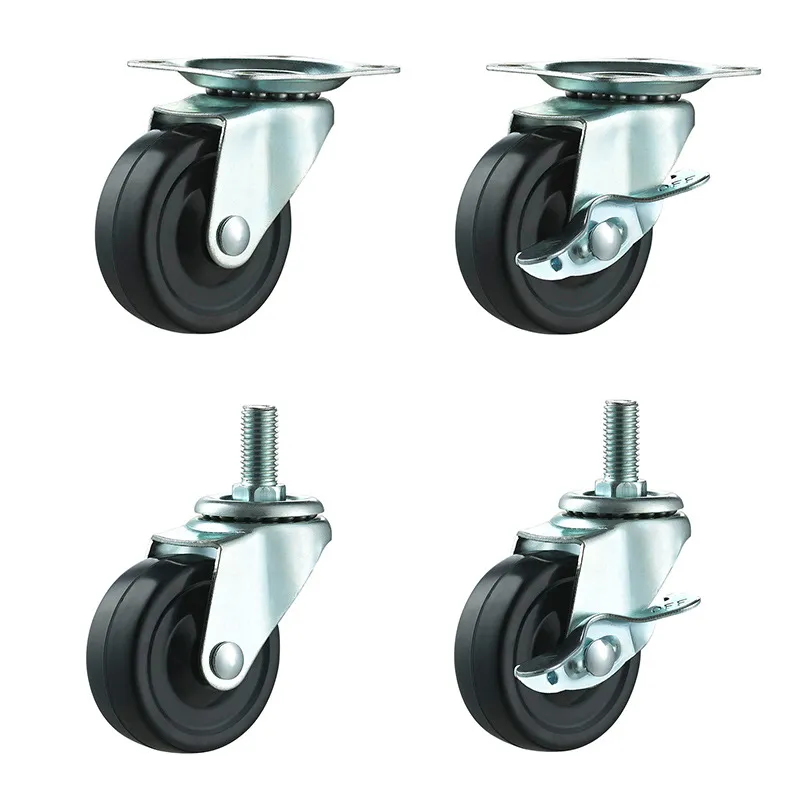
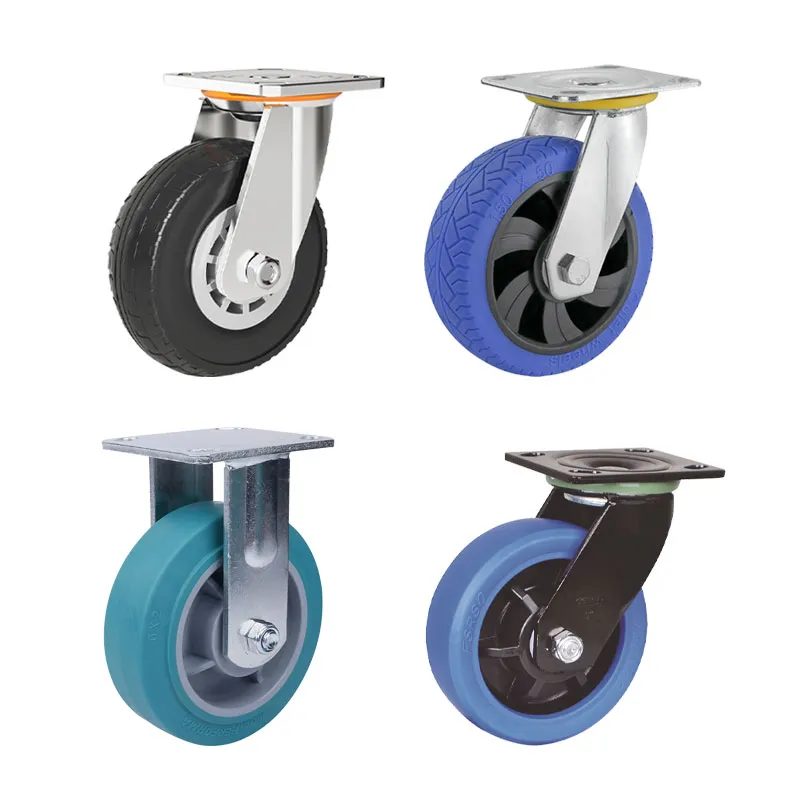

- Advantages:
- Quietness and Shock Absorption: Ideal for protecting delicate materials and smooth rolling.
- Wear Resistance: Offers good longevity in suitable environments.
- Disadvantages:
- Lower Load-Bearing Capacity: Not suitable for very heavy loads.
- Application Scenarios:
- Best for lightweight furniture and home applications where noise and floor protection are important.
2.4 Metal Casters (Cast Iron and Steel)
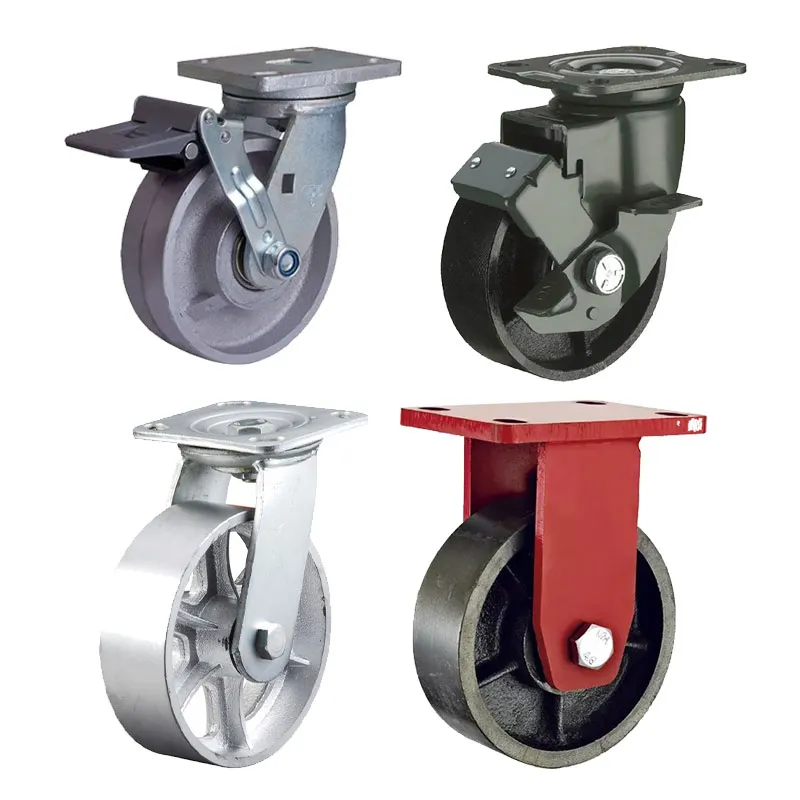
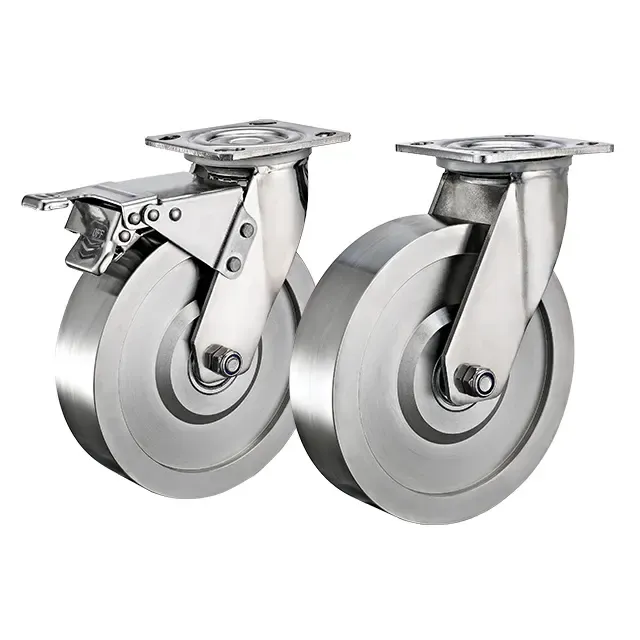
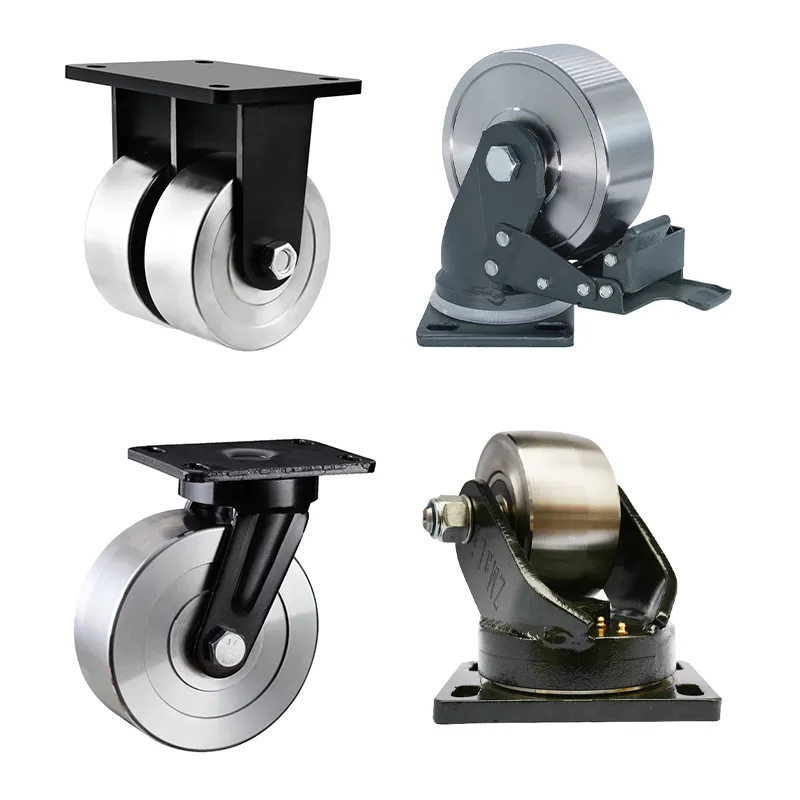
- Advantages:
- High-Temperature Resistance: Can withstand extreme temperatures.
- High Load-Bearing: Suitable for very heavy industrial applications.
- Disadvantages:
- No Shock Absorption: Can be damaging to floors and noisy.
- Application Scenarios:
- Ideal for harsh, industrial environments, including outdoor use and areas with temperature extremes.
2.5 PVC Casters
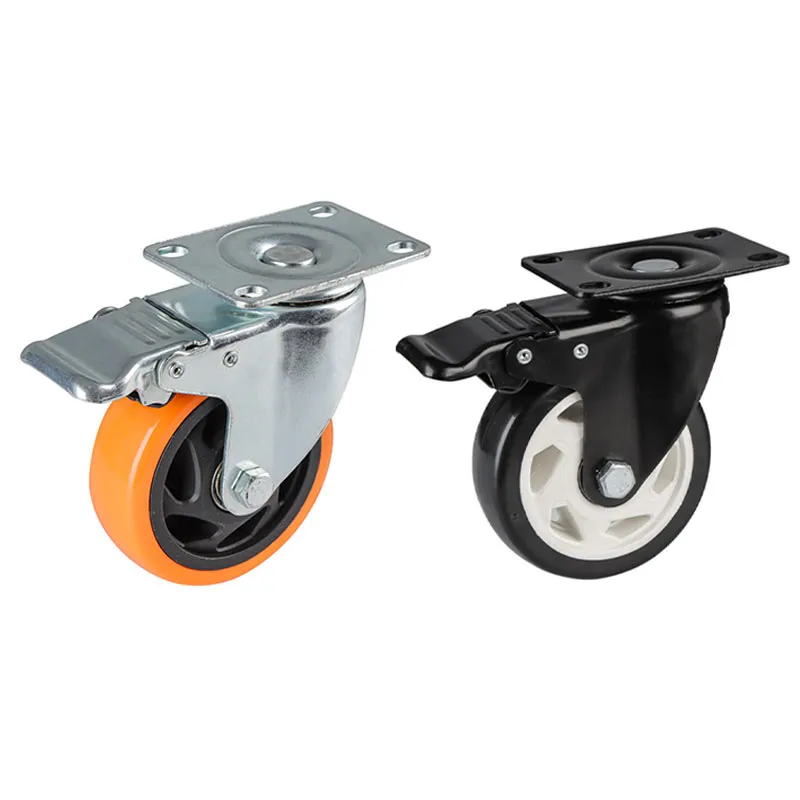
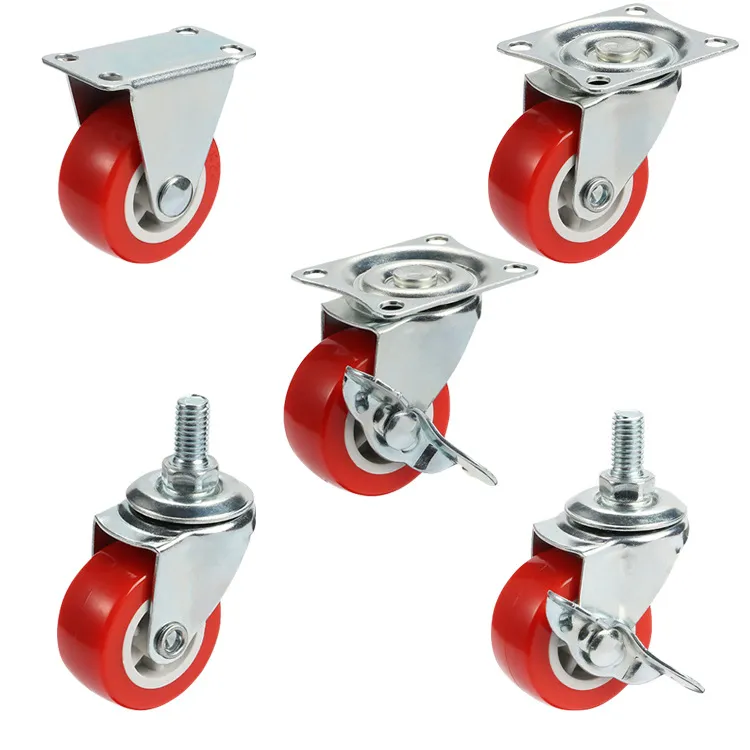
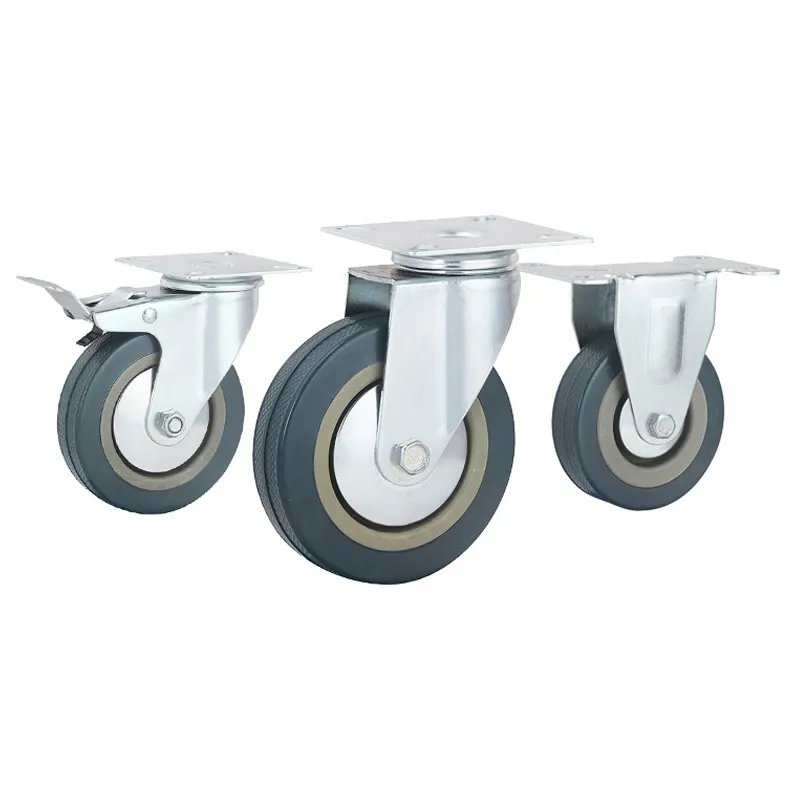
- Advantages:
- High Hardness and Low Cost: Offers a budget-friendly option with decent durability.
- Disadvantages:
- Poor Quiet Performance: Not suitable for environments where noise is a concern.
- Limited Load Capacity: Not ideal for heavy-duty applications.
- Application Scenarios:
- Suitable for temporary solutions or applications where cost is a significant factor.
2.6 Phenolic Casters
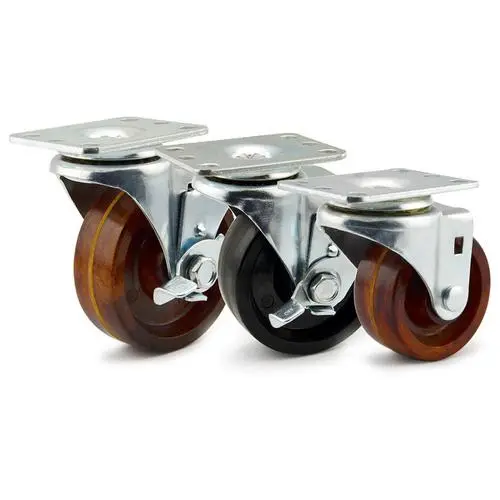
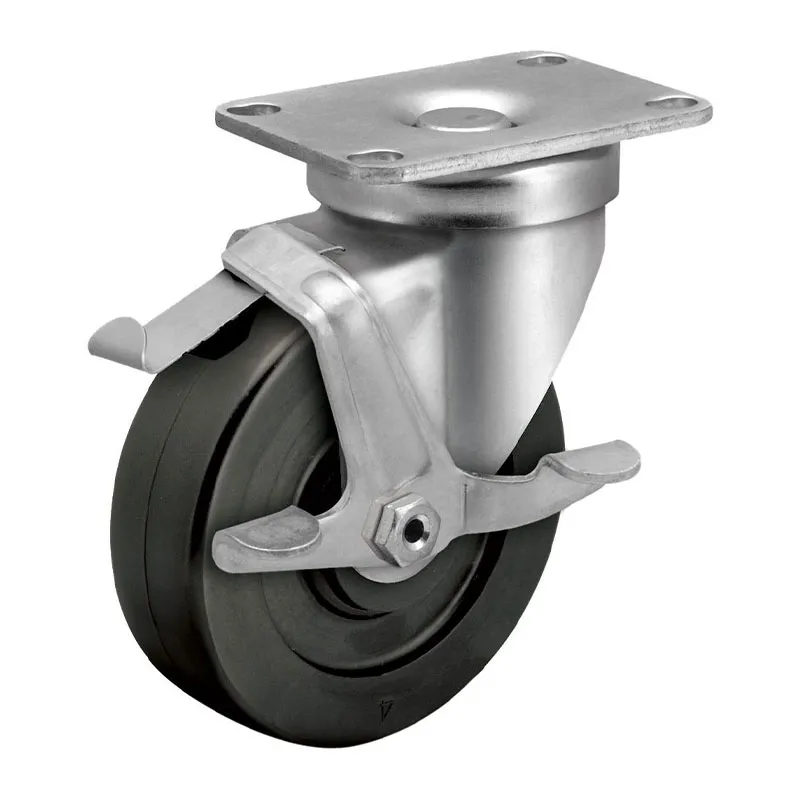
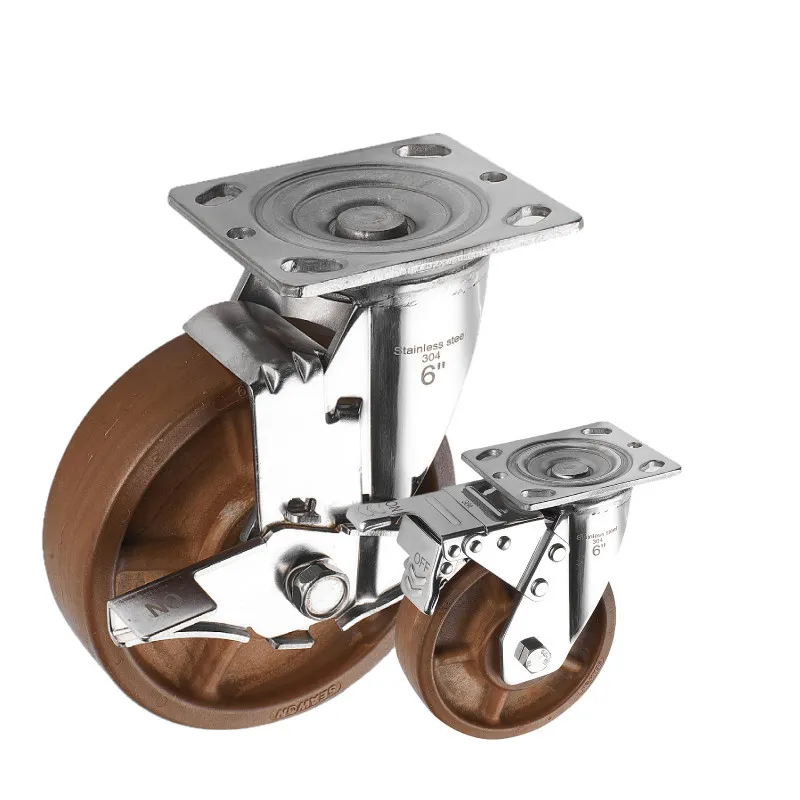
- Characteristics:
- High Temperature Resistance: Great for environments with high heat exposure.
- Application Scenarios:
- Useful in bakeries, industrial kitchens, and places with elevated temperatures.
2.7 Stainless Steel Casters
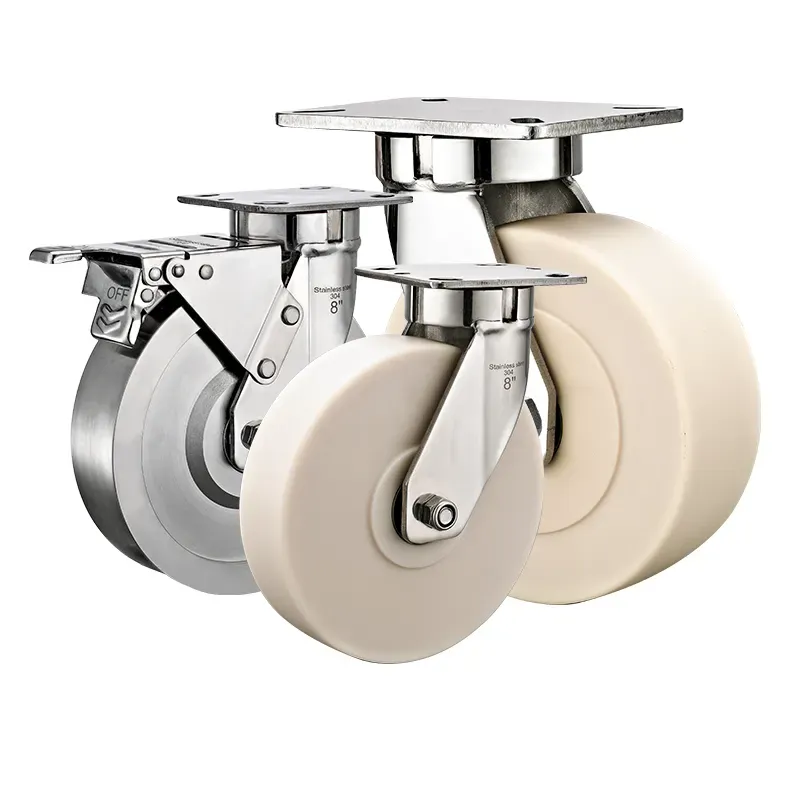

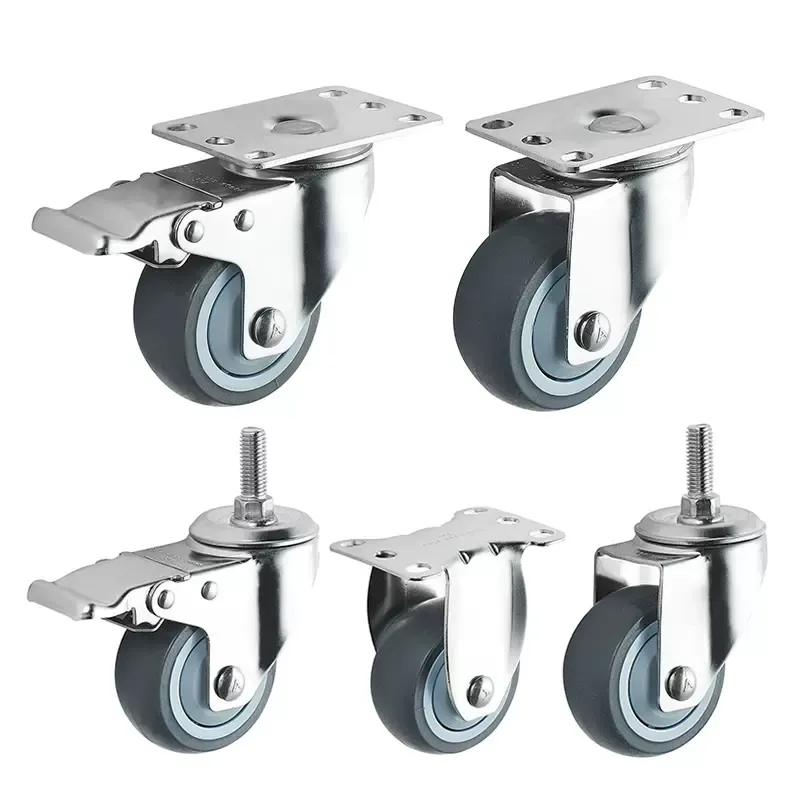
- Advantages:
- Corrosion Resistance: Ideal for environments prone to rust and corrosion.
- Easy Cleaning: Suitable for sanitary conditions, such as in the food and medical industries.
- Disadvantages:
- Higher Cost: More expensive than many other materials.
- Application Scenarios:
- Perfect for medical equipment and food processing industries where cleanliness and corrosion resistance are paramount.
2.8 PP (Polypropylene) Casters
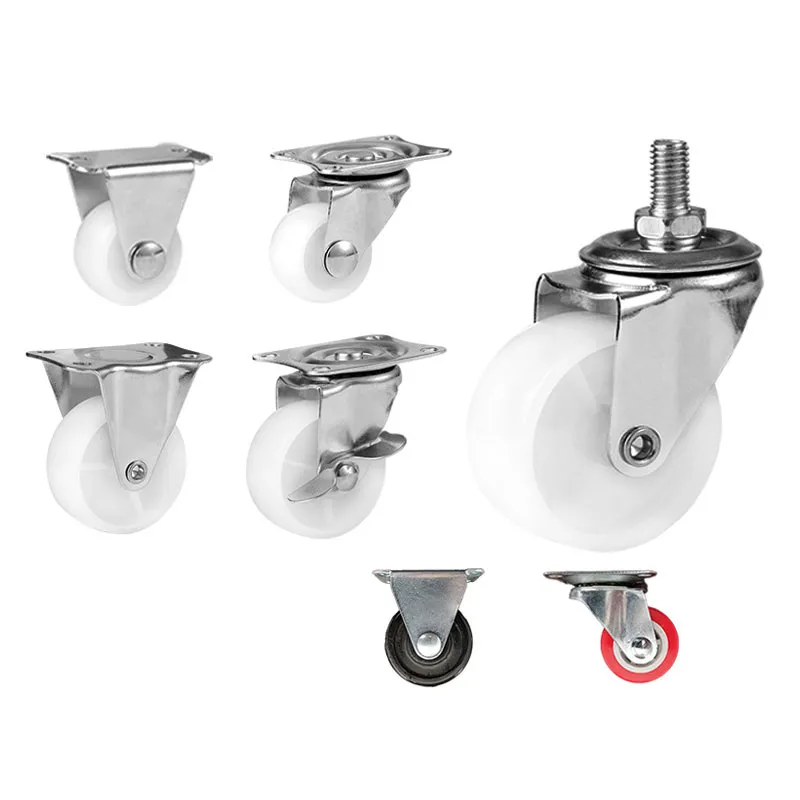
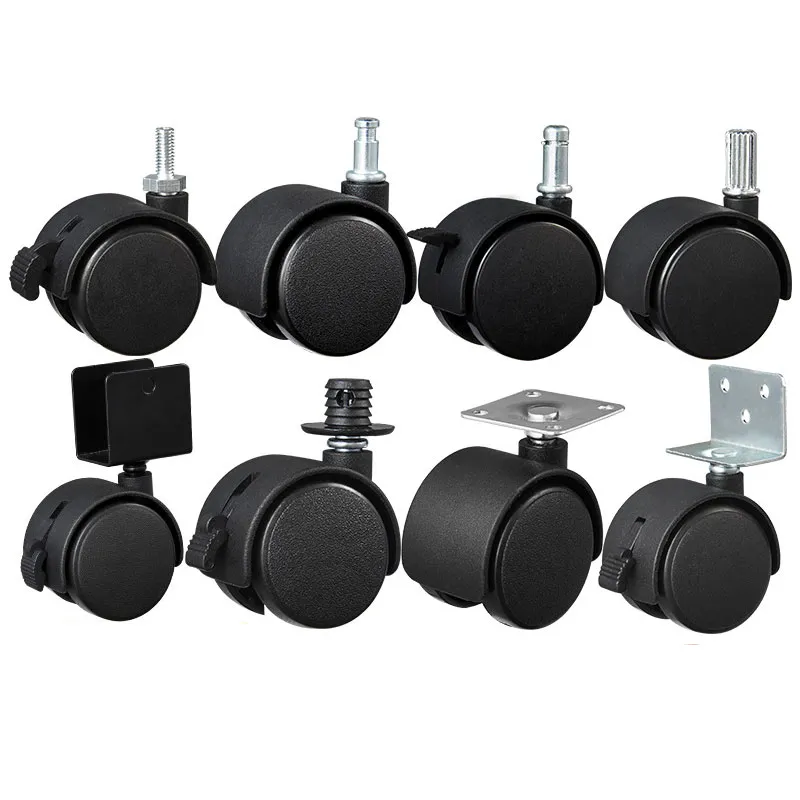
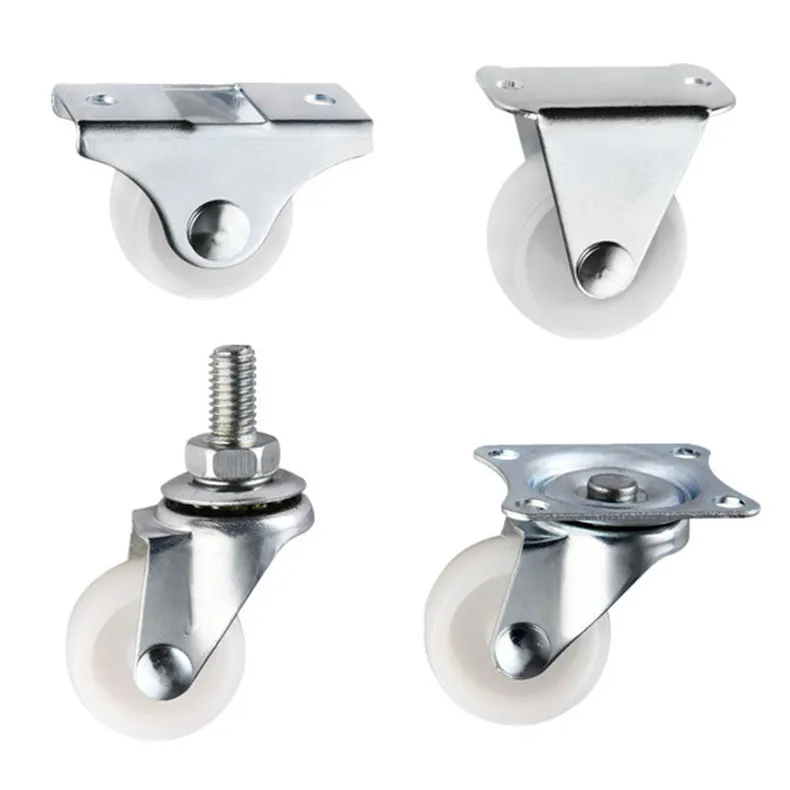
- Advantages:
- Lightweight and Inexpensive: Ideal for light-duty applications.
- Disadvantages:
- Not Suitable for High Loads: Limited in terms of weight capacity.
- Application Scenarios:
- Best for office supplies, light storage solutions, and applications where heavy loads are not a concern.
2.9 Brass Casters


- Characteristics:
- Aesthetic Appeal: Offers a high-end, elegant look.
- Application Scenarios:
- Suitable for high-end furniture and decorative pieces where appearance is a key factor.
Each of these materials offers unique properties that make them suitable for specific applications. The key is to match the material’s strengths and weaknesses with the requirements of the intended use, ensuring optimal performance and longevity of the casters.
Choosing the Right Caster Material
In this final section, we bring together all the insights gained from our exploration of caster wheel materials, offering a comprehensive summary and guiding principles for making the best selection for your specific needs.
3.1 Key Considerations in Material Selection:
- Assessing Load Requirements: It’s crucial to choose a material that can support the weight of your equipment without compromising on safety or efficiency.
- Environment Compatibility: Consider factors like floor type, exposure to chemicals, temperature extremes, and moisture.
- Noise Level Consideration: In environments like hospitals or offices, selecting a quieter material like polyurethane or rubber is beneficial.
- Budget Constraints: While it’s important to not compromise on quality, understanding your budgetary limitations will help in making a practical choice.

3.2 Balancing Functionality and Aesthetics:
- Aesthetic Value: For settings where appearance matters, such as in high-end furniture, brass casters may be ideal.
- Functional Priority: In industrial settings, the functionality and durability of materials like nylon or metal take precedence.
3.3 Custom Solutions for Unique Requirements:
- At Bullcaster, we understand that every application has its unique demands. We specialize in providing customized solutions that cater to specific requirements, ensuring that you get the most out of your caster wheels.
Conclusion
To conclude, the selection of the right caster wheel material is a critical decision that impacts the efficiency, safety, and cost-effectiveness of your operations. At Bullcaster, we are committed to providing high-quality, durable, and reliable caster solutions tailored to your specific needs. Whether you are looking to outfit heavy machinery or need casters for elegant furniture, we have the expertise and capabilities to deliver the perfect solution.
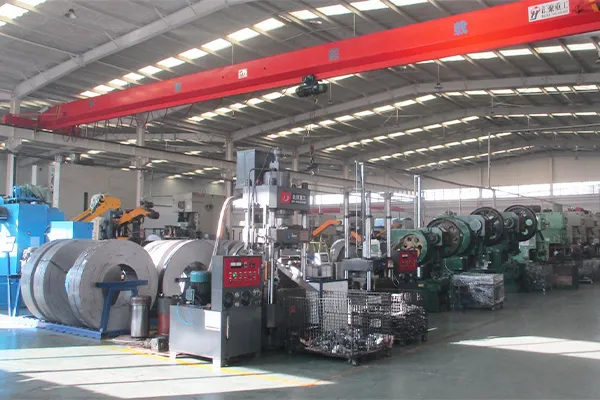
We invite businesses, manufacturers, and individuals seeking top-notch caster solutions to reach out to us. Our team is ready to provide consultation, advice, and customized solutions that meet and exceed your expectations. Contact us today to explore our range of products and find out how we can help you make the optimal caster wheel material choice for your application. Your mobility challenges are our passion, and we look forward to empowering your operations with our state-of-the-art caster solutions.


